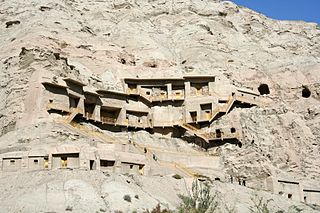
XINJIANG, CHINA—Erosion threatens a network of more than 200 sandstone caves in the dry climate northwestern China. Situated along the ancient Silk Road, the caves were inhabited by Buddhist monks who painted the walls with murals in the style of Indian art. The structures were used as temples from the third through the eighth centuries. Preservationists have tried to fortify the complex with cement and metal poles, but, as conservator Giorgio Bonsanti told Il Giornale dell’Arte, “the signs of progressive decay, which in the long term would turn everything to sand, are dramatically evident.”









